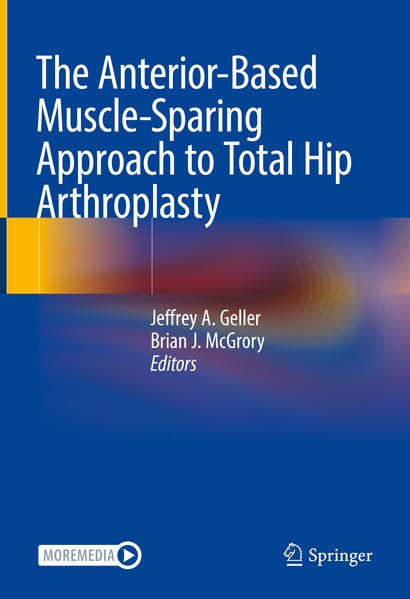رویکرد کاهش عضله قدامی به کل مفصل ران ۲۰۲۲
The Anterior-Based Muscle-Sparing Approach to Total Hip Arthroplasty 2022
دانلود کتاب رویکرد کاهش عضله قدامی به کل مفصل ران ۲۰۲۲ (The Anterior-Based Muscle-Sparing Approach to Total Hip Arthroplasty 2022) با لینک مستقیم و فرمت pdf (پی دی اف)
| نویسنده |
Brian J. McGrory, Jeffrey A. Geller |
|---|
| تعداد صفحهها |
234 |
|---|---|
| نوع فایل |
|
| حجم |
17 Mb |
| سال انتشار |
2022 |
89,000 تومان
معرفی کتاب رویکرد کاهش عضله قدامی به کل مفصل ران ۲۰۲۲
رویکرد کم تهاجمی مبتنی بر ABMS برای آرتروپلاستی کامل هیپ (THA) در سراسر جهان در مکان های خاص به عنوان یک تکنیک جراحی موثر استفاده می شود. همانطور که از نام آن پیداست، عضله را کاملاً حفظ می کند و از مزایای جراحی قدامی، از جمله نرخ کمتر دررفتگی، بازگشت سریع تر به عملکرد اولیه و مصرف کمتر دارو نسبت به بسیاری از روش های جراحی دیگر، استفاده می کند. با این حال، اطلاعات کمی در مورد تکنیک و تحقیقات مرتبط با این فناوری جمع آوری شده است.
این متن به عنوان خلاصه ای از اطلاعات برای جراحانی که علاقه مند به استفاده از این رویکرد جراحی به عنوان یک مرجع جامع هستند، خدمت می کند. به عنوان یک رویکرد جایگزین مبتنی بر قدامی برای رویکرد جراحی مستقیم قدامی، برخی از جراحان ممکن است این تکنیک را جایگزین بهبود یافته ای برای جراحی قدامی مبتنی بر هیپ بدانند. فصل های آغازین تاریخچه رویکرد قدامی جانبی و نحوه انتقال به رویکرد ABMS، از جمله آناتومی جراحی را معرفی می کنند. سپس تکنیک ABMS با بیمار در هر دو موقعیت جانبی و سطحی، از جمله کلیپ های ویدئویی مرتبط نشان داده می شود. ملاحظاتی مانند انتخاب ایمپلنت، تثبیت، و سایر نکات و ترفندها، همراه با مقایسه با سایر رویکردها، نتایج گزارش شده توسط بیمار، عوارض و تکنیک های جراحی تجدیدنظر، و استراتژی های توانبخشی به اشتراک گذاشته شده است.
برای جراحانی که به دنبال گسترش زرادخانه روش های جراحی خود هستند، رویکرد حفظ عضله قدامی در آرتروپلاستی کامل هیپ منبع فوق العاده ای است.
This text serves as a compendium of information for those surgeons interested in utilizing this surgical approach as an all-inclusive reference. As an alternative anterior-based approach to the direct anterior surgical approach, some surgeons may find the technique an improved alternative for anterior hip-based surgery. Opening chapters present the history of the anterolateral approach and how to transition to the ABMS approach, including surgical anatomy. ABMS technique with the patient positioned in both the lateral and supine positions are then presented, including associated video segments. Considerations such as implant selection, fixation, and other tips and tricks are shared, along with comparisons to other approaches, patient-reported outcomes, complications and revision surgery techniques, and rehabilitation strategies.
For hip surgeons looking to expand their armamentarium of surgical approaches, The Anterior-Based Muscle-Sparing Approach to Total Hip Arthroplasty is a terrific resource.




